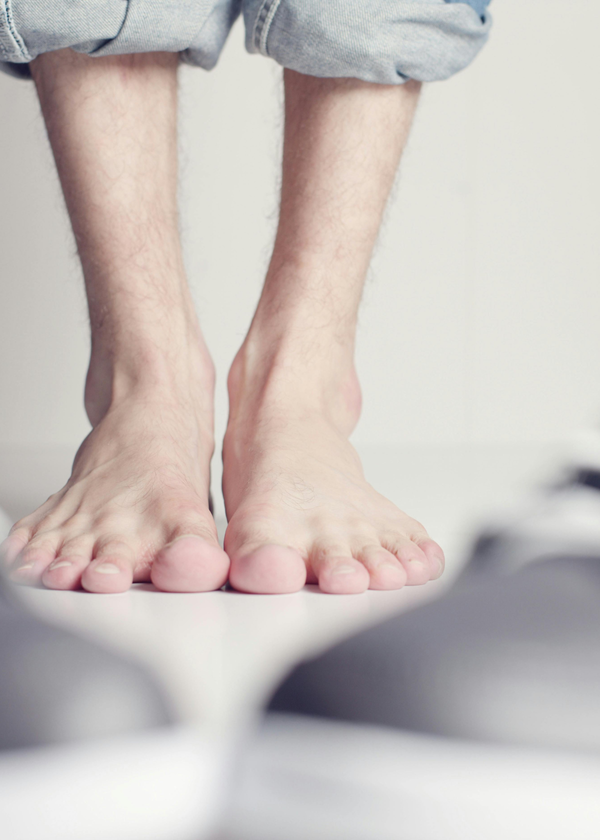Knee pain is a common ailment that affects millions of people worldwide. Whether it's due to aging, overuse, injury, or a chronic condition, finding relief from knee discomfort is a top priority for many.
In recent years, electric knee massagers have gained popularity as a potential solution for managing knee pain. But the burning question remains: Do electric knee massagers work?
In this comprehensive article, we will delve into the science behind these devices, their potential benefits, and the factors to consider when choosing the right one for your needs.
I. Understanding Knee Pain
Before we can assess the effectiveness of electric knee massagers, it's crucial to understand the underlying causes of knee pain.
The knee joint is a complex structure consisting of bones, ligaments, tendons, cartilage, and synovial fluid, all of which work together to provide stability and mobility. Common causes of knee pain include:
- Osteoarthritis: A degenerative joint disease that results in the breakdown of cartilage.
- Rheumatoid Arthritis: An autoimmune disorder that affects the synovium, leading to joint inflammation.
- Tendinitis: Inflammation of the tendons that attach muscles to the knee joint.
- Bursitis: Inflammation of the bursae, small sacs filled with synovial fluid that cushion the knee joint.
- Meniscus Tears: Damage to the cartilage discs (menisci) in the knee.
- Overuse Injuries: Often seen in athletes and active individuals, overuse can lead to strain or injury in the knee.
- Trauma: Accidents or falls can result in knee injuries, such as ligament tears (e.g., ACL or MCL tears) or fractures.
II. Electric Knee Massagers: How Do They Work?
Electric knee massagers are designed to provide relief from knee pain and discomfort by employing various mechanisms.
While the exact features may vary from one model to another, here are the common components and techniques used in these devices:
- Heat Therapy: Many electric knee massagers incorporate heating elements that emit gentle warmth. Heat therapy can help relax muscles, improve blood circulation, and reduce stiffness.
- Vibration: Vibrating elements in the massager create rhythmic movements, which can stimulate blood flow, alleviate muscle tension, and provide a soothing sensation.
- Compression: Some massagers use airbags or straps to apply controlled pressure to the knee area. This compression can aid in reducing swelling and promoting circulation.
- TENS (Transcutaneous Electrical Nerve Stimulation): TENS technology involves sending low-frequency electrical pulses to the knee area. This can help block pain signals, reduce muscle spasms, and stimulate the release of endorphins, the body's natural painkillers.
- EMS (Electrical Muscle Stimulation): EMS targets the muscles around the knee by sending electrical impulses. This can help strengthen weakened muscles and improve joint stability.
- Massage Modes: Electric knee massagers often feature multiple massage modes, such as kneading, tapping, and rolling, which mimic the techniques of a human massage therapist.
III. The Science Behind Electric Knee Massagers
To determine whether electric knee massagers work, it's essential to examine the scientific evidence supporting their efficacy. While research in this area is ongoing, several studies have shed light on the potential benefits of using these devices:
- Pain Reduction: A study published in the "Journal of Back and Musculoskeletal Rehabilitation" found that TENS therapy, a feature commonly included in electric knee massagers, can effectively reduce pain in individuals with knee osteoarthritis.
- Improved Range of Motion: Another study in the "Clinical Rehabilitation" journal demonstrated that knee massage, when combined with other physical therapy techniques, led to significant improvements in knee flexion and extension in patients with knee osteoarthritis.
- Muscle Strength: Research published in the "Journal of Physical Therapy Science" suggests that electrical muscle stimulation (EMS) can enhance muscle strength around the knee joint, which is beneficial for knee rehabilitation.
- Reduced Swelling: Compression therapy, often incorporated into electric knee massagers, has been shown to reduce edema and swelling in patients recovering from knee surgery.
- Enhanced Blood Circulation: The application of heat and vibration in electric knee massagers may promote better blood circulation, aiding in the delivery of nutrients and oxygen to the knee joint.
It's important to note that individual responses to electric knee massagers can vary, and not all studies have shown consistent results.
However, these findings suggest that these devices have the potential to be beneficial in managing knee pain and discomfort.
IV. Benefits of Electric Knee Massagers
Now that we've explored the science behind electric knee massagers, let's delve into their potential benefits:
- Non-Invasive Pain Relief: Electric knee massagers provide a non-invasive alternative to pain management, reducing the need for pain medications or invasive treatments.
- Convenience and Accessibility: These devices are designed for home use, allowing individuals to incorporate knee therapy into their daily routines.
- Customizable Therapy: Most electric knee massagers offer a range of settings and intensities, allowing users to tailor the therapy to their specific needs.
- Reduced Muscle Tension: The combination of heat, vibration, and massage techniques can effectively reduce muscle tension, promoting relaxation and comfort.
- Enhanced Recovery: Electric knee massagers can aid in post-injury or post-surgery recovery by promoting blood circulation, reducing swelling, and supporting muscle rehabilitation.
- Improved Mobility: Users with limited knee mobility may experience increased joint flexibility and range of motion with regular use.
- Cost-Effective: When compared to frequent visits to a massage therapist or physical therapist, electric knee massagers can provide cost-effective relief over time.
V. Factors to Consider When Choosing an Electric Knee Massager
Before purchasing an electric knee massager, it's essential to consider several factors to ensure that you select the right device for your needs:
- Type of Pain: Identify the underlying cause of your knee pain, as different massagers may be more suitable for specific conditions.
- Features: Determine which features are most important to you, whether it's heat therapy, TENS, EMS, or a combination of these.
- Size and Fit: Ensure that the massager fits comfortably on your knee and is adjustable to accommodate various leg sizes.
- Portability: Consider whether you want a portable, battery-operated massager or one that needs a power source.
- User-Friendliness: Opt for a massager with an easy-to-use control interface and clear instructions.
- Durability: Look for a well-constructed massager that is built to last, as frequent use can put stress on the device.
- Safety: Check for safety features such as automatic shut-off timers to prevent overuse.
- Customer Reviews: Read user reviews to gain insights into the real-world performance of the massager you're considering.
Conclusion:
In answering the question, "Do electric knee massagers work?" it's clear that these devices have the potential to provide relief from knee pain and discomfort.
While individual responses may vary, the scientific evidence and numerous reported benefits suggest that electric knee massagers can be a valuable addition to a comprehensive knee pain management plan.
If you're suffering from knee pain, it's crucial to consult with a healthcare professional to determine the underlying cause of your discomfort and to discuss the use of electric knee massagers as part of your treatment strategy.
When used correctly and in conjunction with other recommended therapies, electric knee massagers may help improve your quality of life and provide much-needed relief from knee pain.








